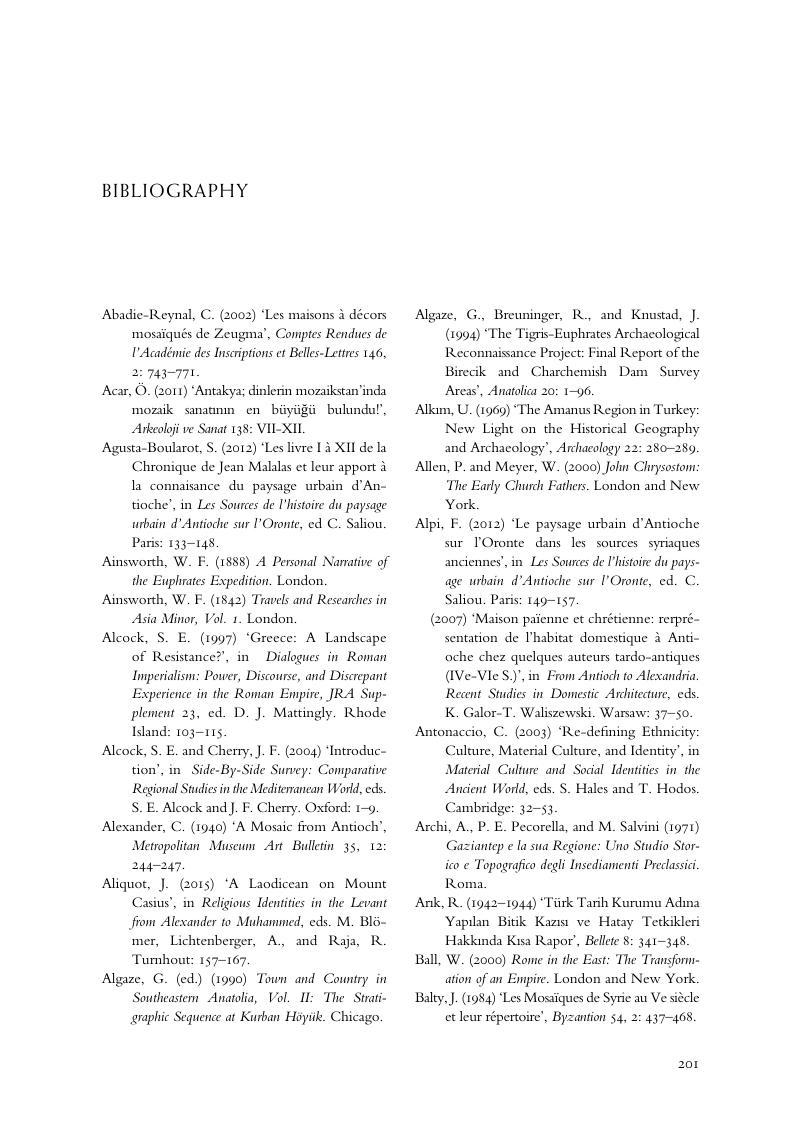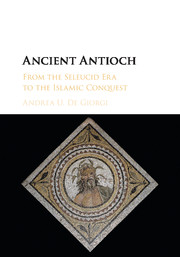Book contents
- Ancient Antioch
- Ancient Antioch
- Copyright page
- Dedication
- Contents
- Figures
- Maps
- Abbreviations
- Introduction
- Chapter One Archaeologists and the Sanjak
- Chapter Two Foundation and growth of the city
- Chapter Three The plain of Antioch and the Amuq Valley
- Chapter Four The highlands of Antioch
- Chapter Five The archaeology of the western Antiochene
- Chapter Six The people of Antioch
- Conclusions
- Notes
- Bibliography
- Index
- References
Bibliography
Published online by Cambridge University Press: 05 May 2016
- Ancient Antioch
- Ancient Antioch
- Copyright page
- Dedication
- Contents
- Figures
- Maps
- Abbreviations
- Introduction
- Chapter One Archaeologists and the Sanjak
- Chapter Two Foundation and growth of the city
- Chapter Three The plain of Antioch and the Amuq Valley
- Chapter Four The highlands of Antioch
- Chapter Five The archaeology of the western Antiochene
- Chapter Six The people of Antioch
- Conclusions
- Notes
- Bibliography
- Index
- References
Summary

- Type
- Chapter
- Information
- Ancient AntiochFrom the Seleucid Era to the Islamic Conquest, pp. 201 - 216Publisher: Cambridge University PressPrint publication year: 2016



